Market Data

August 2, 2019
SMU Analysis: Consumer Confidence Recovered in July
Written by Peter Wright
Consumer confidence, as reported by The Conference Board, declined sharply in June but recovered in July.
The Conference Board measure of consumer confidence is quite a volatile indicator, therefore we prefer to smooth the data with a moving average to reduce monthly variability.
The composite value of consumer confidence in July was 135.7, up from 124.3 in June. The three-month moving averages (3MMA) were 130.4 and 128.3, respectively. The composite index is made up of two sub-indexes: the consumer’s view of the present situation and his or her expectations for the future. In July, expectations returned to their trend line, but the consumer view of the present situation is still below the nine-year trend line (Figure 1).
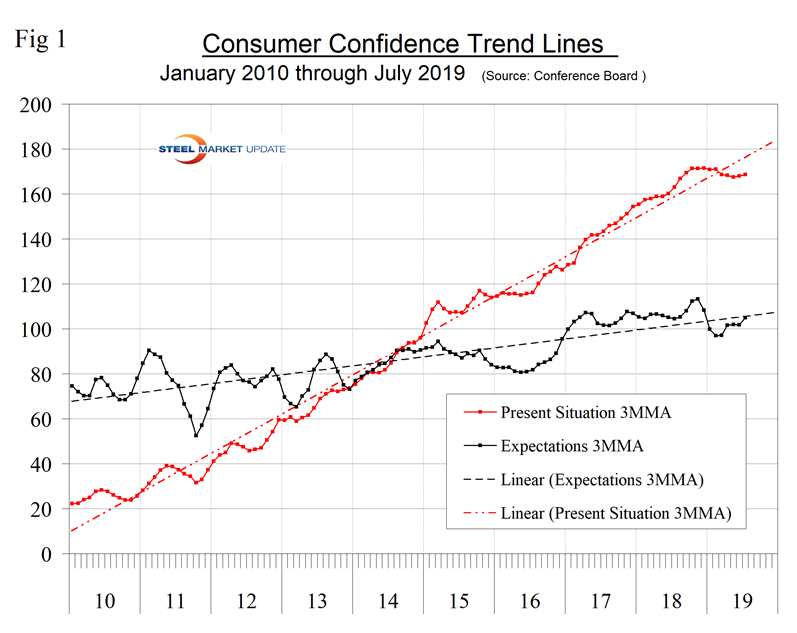
Moody’s Analytics summarized as follows: “U.S. consumer confidence jumped in July, rising from a revised 124.3 (previously 121.5) to 135.7. The gain was larger than our above-consensus forecast and puts confidence close to its cyclical high of 137.9. Consumers’ assessment of present conditions increased in July, reversing most of the drop in June. Also, expectations rose from 97.6 to 112.2. The labor market differential improved in July and is consistent with our forecast for the unemployment rate to have slipped from 3.7% to 3.6%. All told, confidence has been volatile this year and the gain in July doesn’t alter our forecast for real consumer spending, but it does likely reduce the odds of a recession in the next 12 months.”
The increase in the monthly composite in July was mainly due to an improvement in consumers’ expectations. The consumer’s view of the present situation in July was exactly the same as in May, making the June result an outlier. The historical pattern of the 3MMA of the composite, the view of the present situation, and expectations since January 1990 are shown in Figure 2. Recent months’ results have all been better than at any time since the pre-recession high.
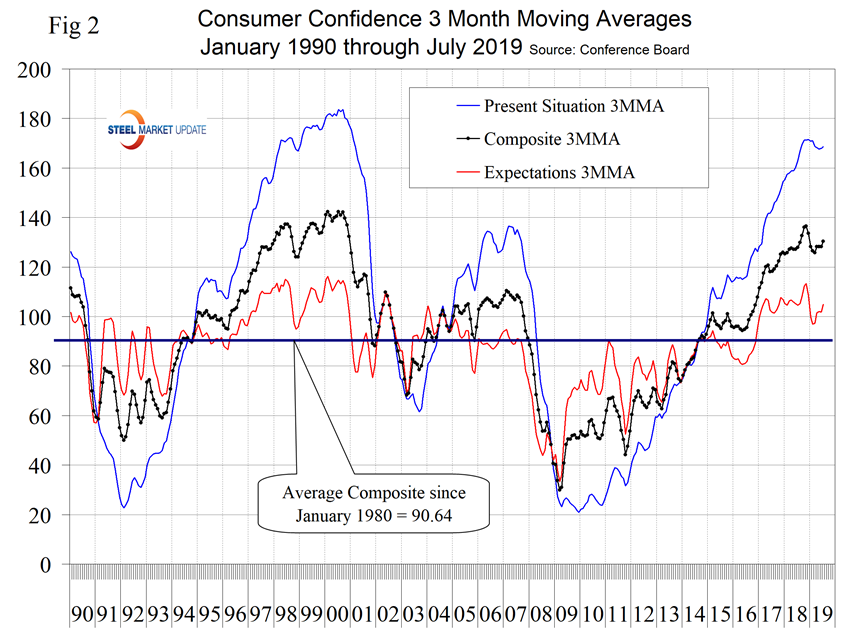
On a three-month moving average basis comparing July 2019 with July 2018, the 3MMA of the present situation was up by 5.6 points and expectations were up by 0.4 points (Table 1). The color codes show improvement or deterioration of the individual components in Table 1. July was the first month for the table to be all green since January 2018.
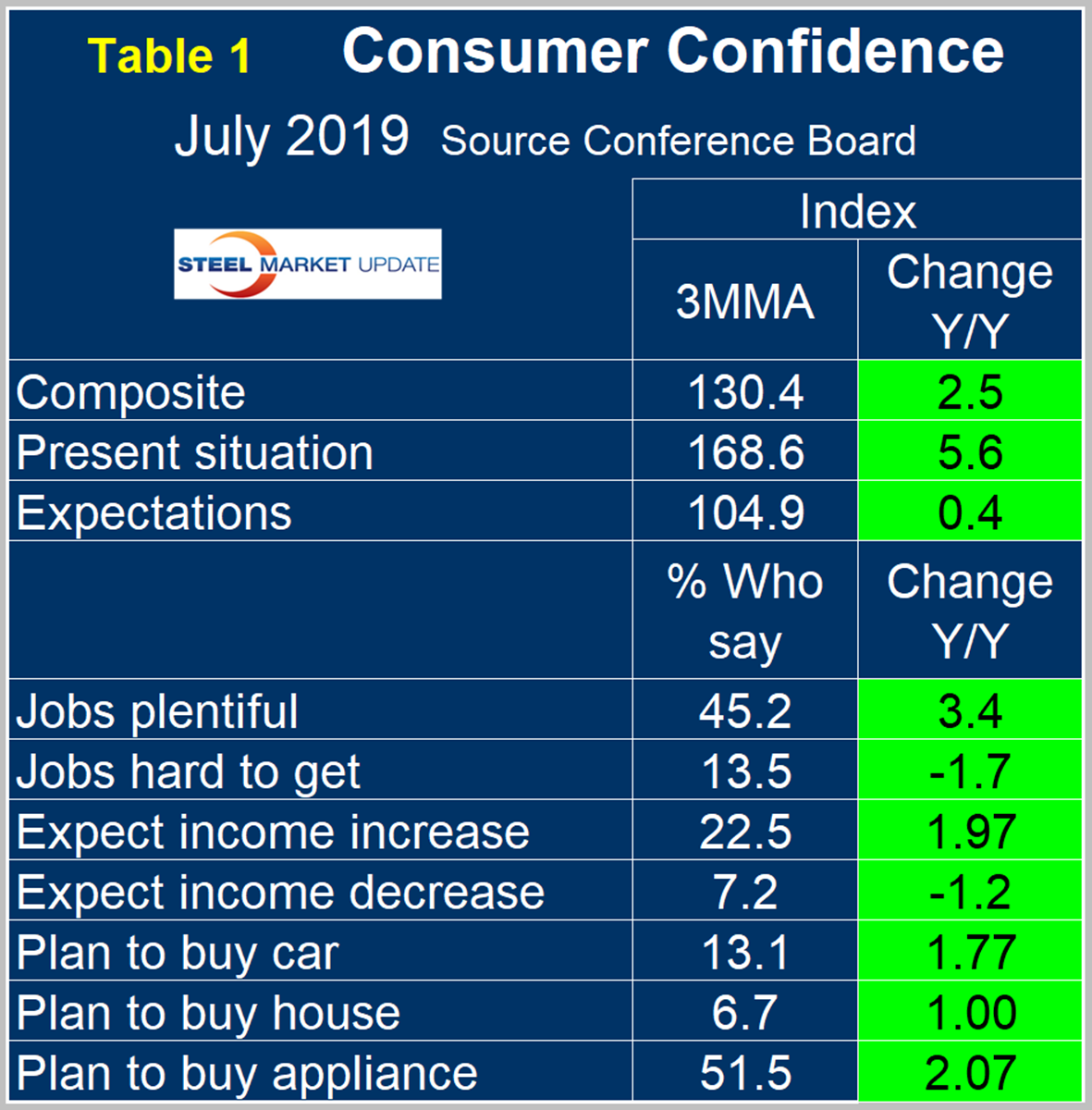
The consumer confidence report includes employment data that is still encouraging as 45.2 percent of respondents reported jobs to be plentiful and 13.5 percent reported jobs hard to get (Figure 3). Expectations for wage increases were also positive, with 22.5 percent expecting an increase and 7.2 percent expecting a decrease.
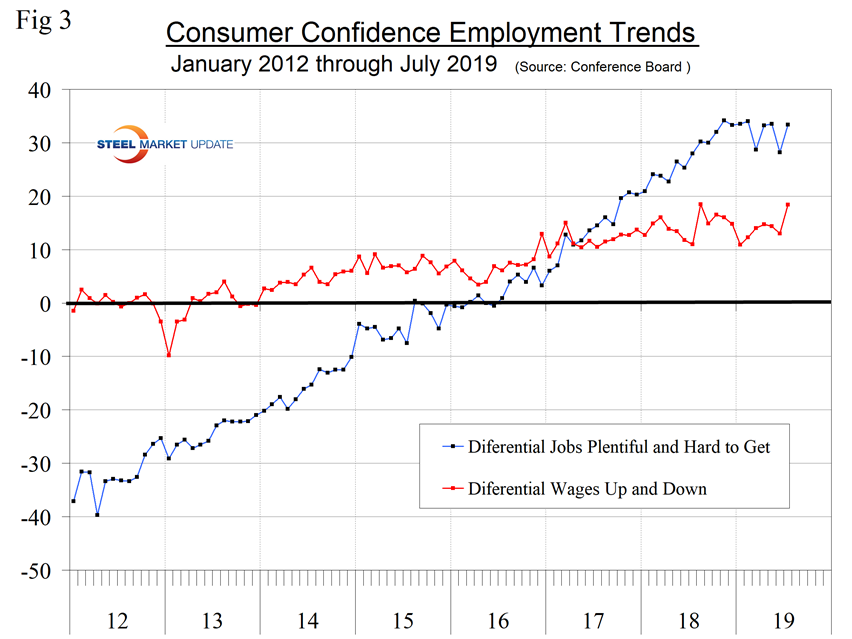
Consumer spending measures in June indicated that year-over-year plans to buy a car have been drifting up, plans to buy an appliance have been erratic and plans to buy a house have not made progress in 18 months (Figure 4).
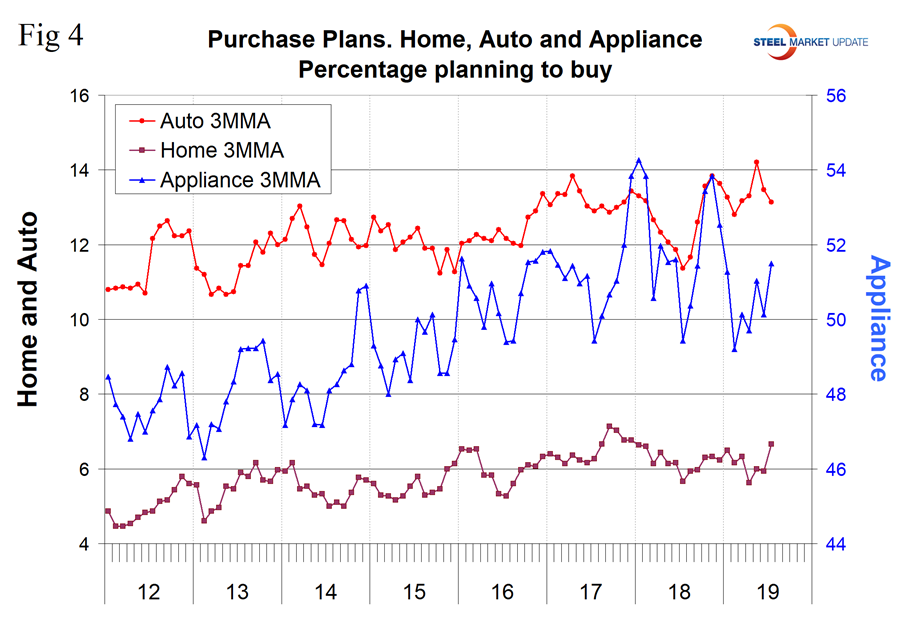
SMU Comment: The Conference Board Consumer Confidence Index is a volatile measure and must be reviewed as a three-month moving average to obtain a realistic view of trends. On that basis it is clear that confidence improved in July, but not by as much as the headline result suggested. Employment trends are still good and stable. Steel demand is dependent on the growth of GDP, which in turn is strongly influenced by consumer confidence, disposable income and a willingness to spend. Therefore, this was a good report.
About The Conference Board: The Conference Board is a global, independent business membership and research association working in the public interest. The monthly Consumer Confidence Survey®, based on a probability-design random sample, is conducted for The Conference Board by Nielsen. The index is based on 1985 = 100. The composite value of consumer confidence combines the view of the present situation and of expectations for the next six months.






